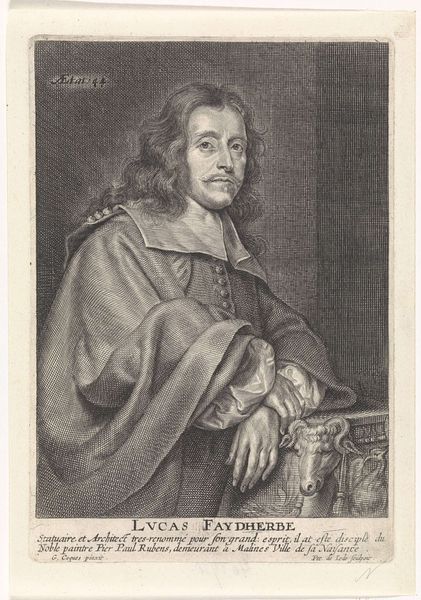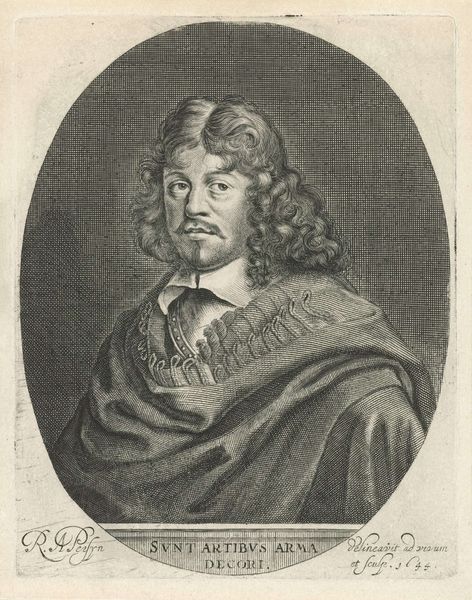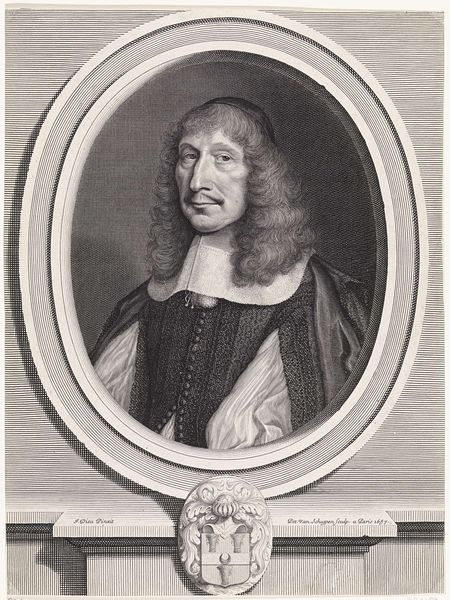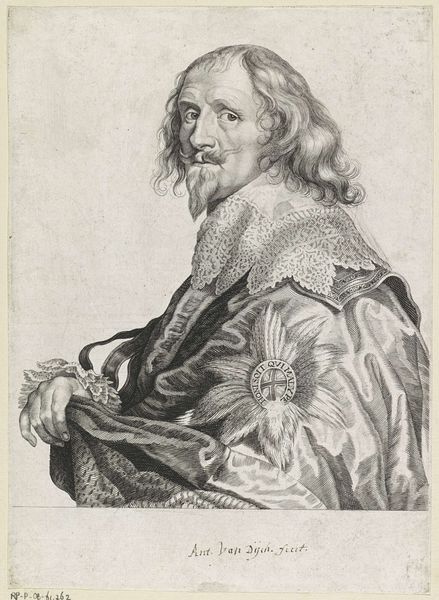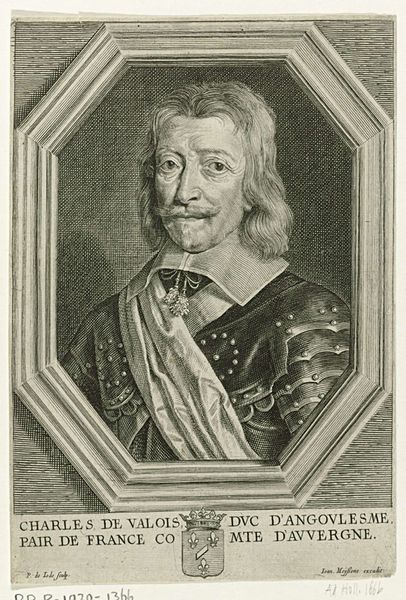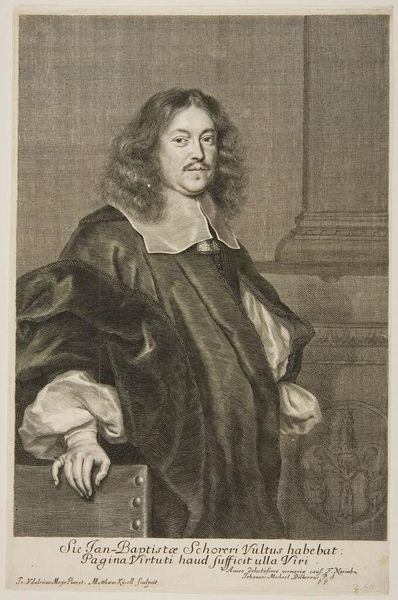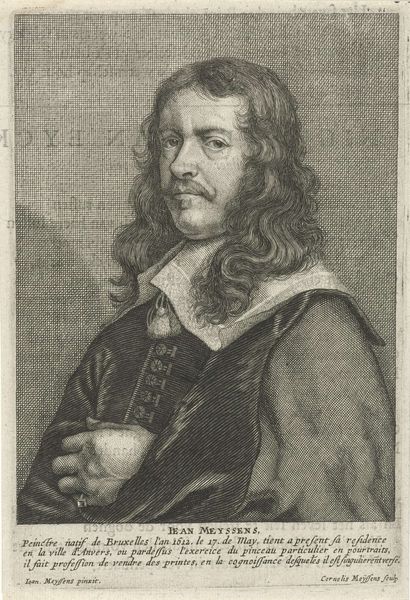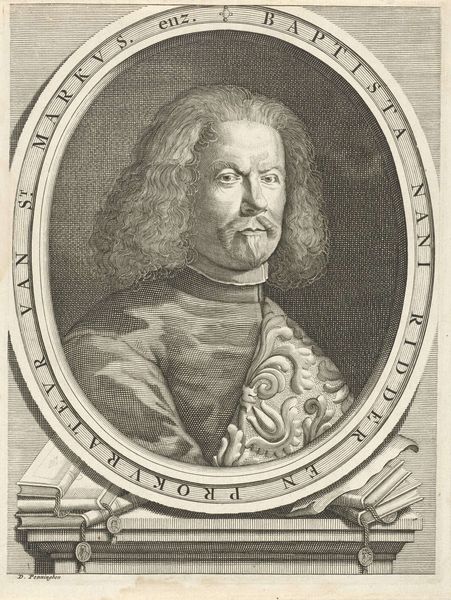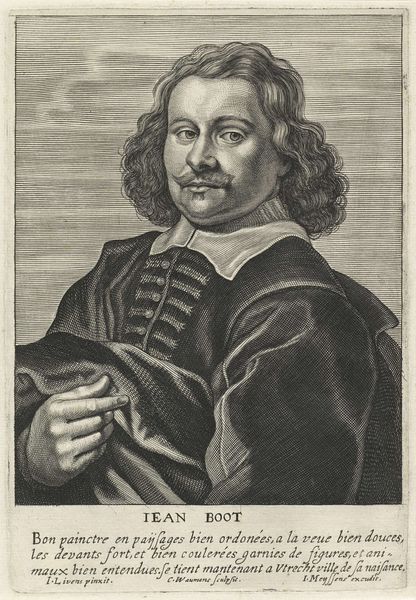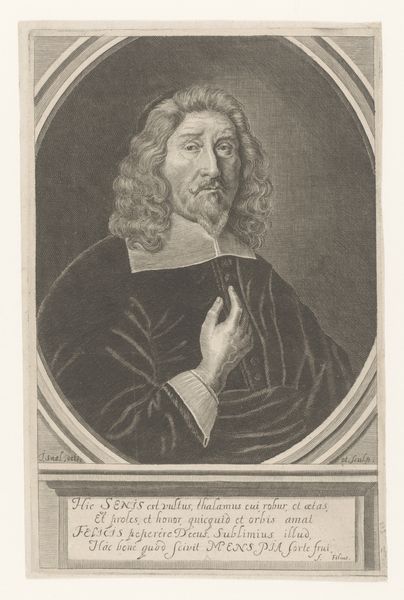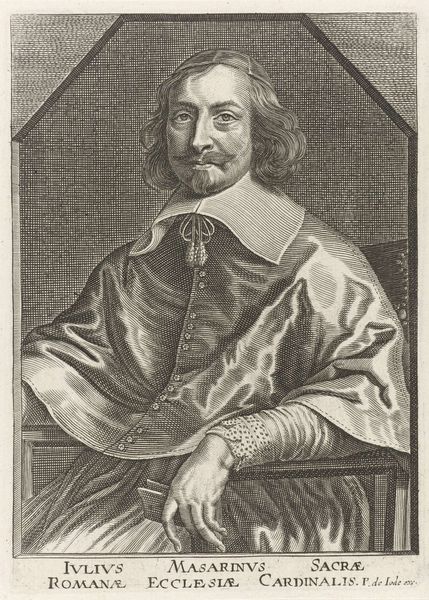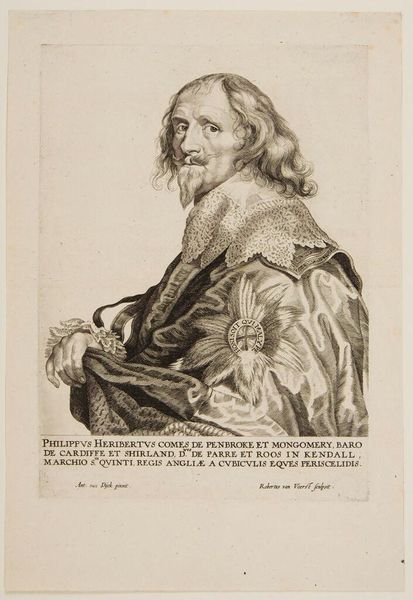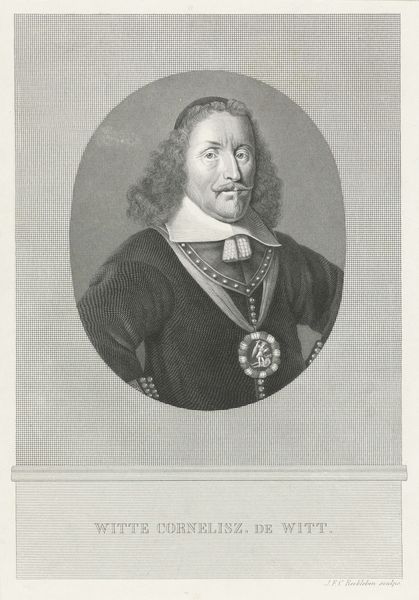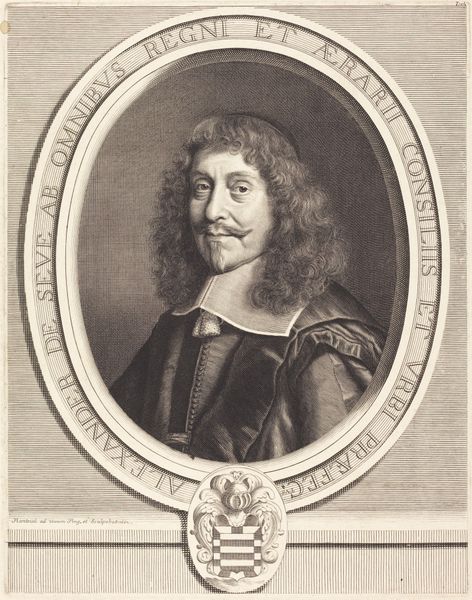
engraving
#
portrait
#
baroque
#
old engraving style
#
19th century
#
portrait drawing
#
history-painting
#
engraving
Dimensions: height 270 mm, width 168 mm
Copyright: Rijks Museum: Open Domain
Editor: Here we have Jeremias Falck’s engraving, "Portret van Johannes Hevelius," dating from between 1646 and 1649. The detail is amazing, and I find the subject’s expression rather enigmatic. What can you tell me about how this portrait reflects the world around it? Curator: It's crucial to consider the context of scientific patronage at this time. Hevelius was a prominent astronomer; portraits like this one were vital in establishing and broadcasting his intellectual authority. Consider the carefully rendered details—the lace collar, the opulent robe. These visual cues signal status and accomplishment, influencing how viewers received his scientific endeavors. Does this shift your perspective at all on the initial impression that you shared? Editor: That’s a good point, it’s easy to get lost in the visual details but thinking about the reason this image would even exist – to promote his work to possible sponsors or other astronomers. Why choose an engraving, versus something like painting? Curator: Engravings, being reproducible, offered a broader distribution network than unique painted portraits. It democratized the image, allowing for wider circulation among the scientific community and potential patrons across geographical boundaries. We might see this as an early form of academic branding. Editor: I see what you mean, it’s about access and visibility. Thanks, it really reframes how I initially perceived the image. Curator: Exactly, and it's important to think about how these images functioned within a network of power and knowledge. Always consider not just the what, but the why and for whom.
Comments
No comments
Be the first to comment and join the conversation on the ultimate creative platform.
